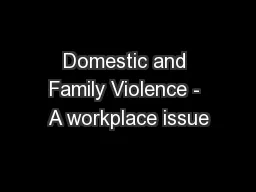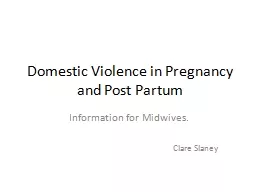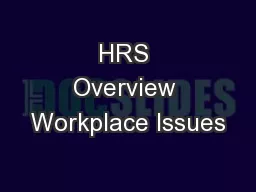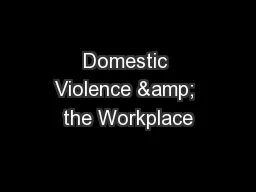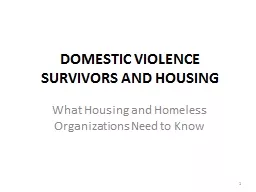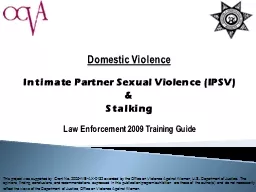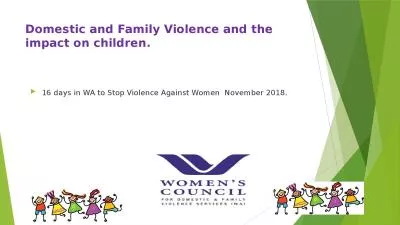PPT-Domestic and Family Violence - A workplace issue
Author : natalia-silvester | Published Date : 2018-03-14
Financial independence and security at work are important steps for victims in addressing the violence hence the importance of understanding the impact of DFV in
Presentation Embed Code
Download Presentation
Download Presentation The PPT/PDF document "Domestic and Family Violence - A workpla..." is the property of its rightful owner. Permission is granted to download and print the materials on this website for personal, non-commercial use only, and to display it on your personal computer provided you do not modify the materials and that you retain all copyright notices contained in the materials. By downloading content from our website, you accept the terms of this agreement.
Domestic and Family Violence - A workplace issue: Transcript
Download Rules Of Document
"Domestic and Family Violence - A workplace issue"The content belongs to its owner. You may download and print it for personal use, without modification, and keep all copyright notices. By downloading, you agree to these terms.
Related Documents

